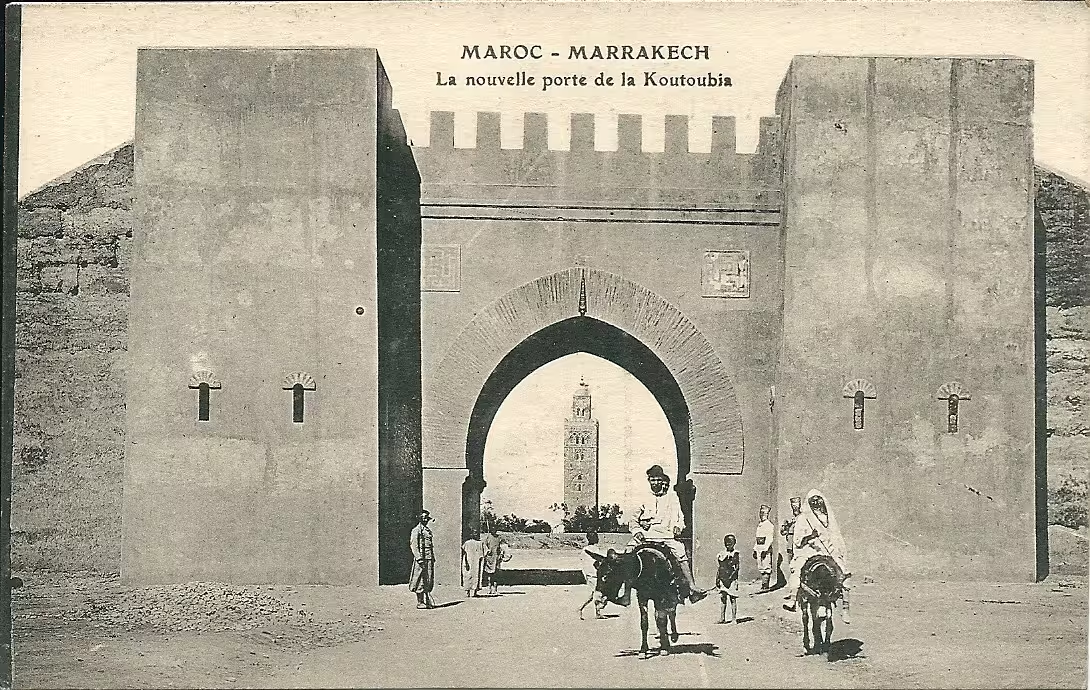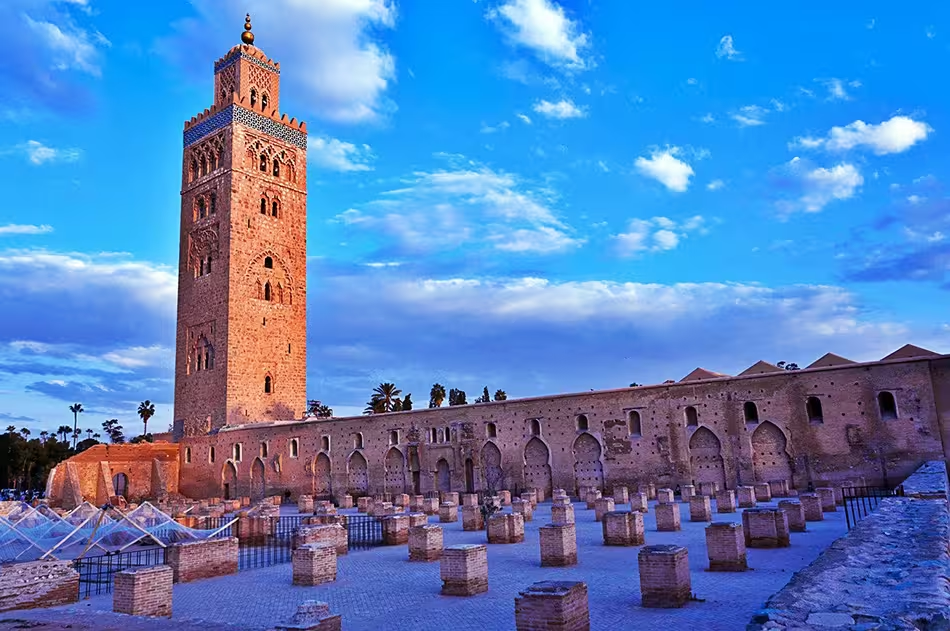In Marrakesh, Morocco, the Koutoubia Mosque is a must-see. It towers over the wide area of the well-known public square, Jemma el-Fnaa. This is the lighthouse guiding you to the Red City from a distance.
Hundreds of years ago, can you imagine a caravan passing through Morocco? A tower rises in front of tired travelers. During prayer time, the muezzin's singsong chant drifts out to meet them in the hot, calm desert air. For over seven centuries, travelers have been welcomed to Marrakesh by these sights and sounds. With its renowned minaret towering over everything, the Koutoubia Mosque is situated in the heart of the ancient city.
The History of the Koutoubia Mosque
The history of the Koutoubia Mosque is extensive. The Arabic word for "bookseller" is where the name originates. Books and manuscripts were regularly sold at various stalls outside the mosque as well as in the gardens surrounding it. This is intriguing, primarily because, in the Christian world, books were relatively unknown even in the 1200s.
The Almoravids established Marrakesh as their capital city while they ruled Morocco. On the same spot as the current Koutoubia Mosque, the constructed a mosque. But the mosque and much of the city were destroyed when the Almohads, who succeeded the Almoravids as the next ruling dynasty, took control of the kingdom. This was deliberate since Almohad would never think to pray in a structure that his adversary had built.
On this location, a new mosque in what is now known as the "Almohad style" was built during the Almohad Dynasty. Parts of the current mosque actually originate from Sultan Abd el-Moumen's reign, which lasted from 1133 to 1163 CE.
Due to an error in the prayer niche's orientation toward Mecca, a second mosque had to be constructed. Koutoubia is a double mosque as a result. It is 5,400 square meters, or 58,000 square feet, in size and is designed like a hall. Within its walls, 25,000 Muslims are able to pray. Koutoubia Mosque has seventeen aisles and eleven2 columns. An elaborately carved pulpit belonging to Almoravid Sultan Ali ben Youssef remains from the Almoravid mosque that was previously destroyed. It is said that this Moorish mosque represents the height of Almohad art. The arches, cupolas, and painted ceilings all have Spanish and Moorish influences. This mosque is unique in another way since it was constructed under a single ruler's rule. Similar mosques took more than 200 years to build, like The Great Mosque in Cordoba.
The Myth of the Koutoubia Mosque
The Koutoubia Mosque was rumored to have three gold spheres built into its minaret. Diverse perspectives exist regarding the importance of these spheres. They might represent the three major Arab mosques: Jerusalem's al Aqsa Mosque, Medina's Prophet Mosque, and Mecca's al-Haram Mosque. Alternatively, it's possible that they were intended to represent the three elements of life—fire, air, and water.
A fourth sphere was added at some point. According to the legend, during the holy month of Ramadan, Sultan Yacoub el-Mansour's wife prematurely broke her fast. She had her gold jewelry melted and formed into a fourth sphere as her penance. According to alternate myths, her jewelry was the source of all four of the original spheres.
The spheres atop the tower that you see today are composed of copper. It's unclear what became of the original spheres and whether they were ever made of gold. or if it was just one more elaborate tale told by Marrakesh's numerous storytellers.
The Minaret of the Koutoubia Mosque
This unusual minaret was finished during Sultan el-Mansour's reign and was quite an engineering achievement at the time. A ramp surrounds the tower, which is 221 feet (69 meters) high, making it easier for the muezzin to ascend this amazing structure. The interior is composed of six rooms stacked one on top of the other. Koutoubia is the model for two minaret towers: Giralda in Seville and Hassan in Rabat.
The Koutoubia Mosque Today
The Koutoubia Mosque underwent the required renovations in 1997 to modernize and strengthen it. Non-Muslim guests can enjoy the exterior views of the mosque and minaret, as well as the Koutbouia Gardens and the adjacent Cyber Park—the first public park in Morocco with free wifi! As with most mosques in Morocco, non-Muslims are prohibited from entering the mosque's interior.

